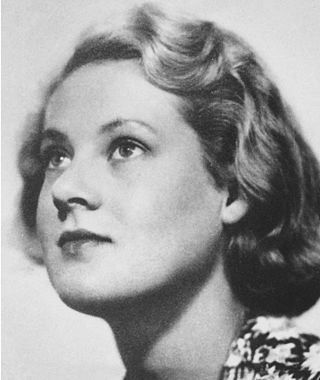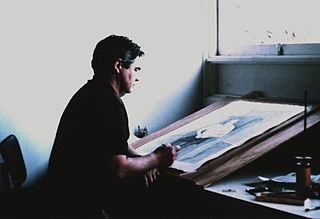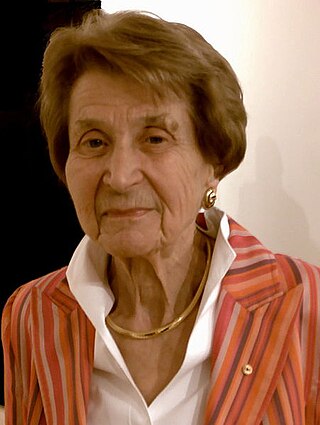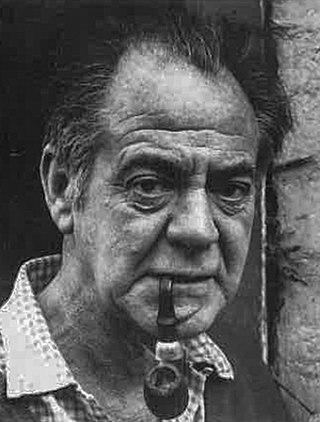
Joy St Clair Hester was an Australian artist. She was a member of the Angry Penguins movement and the Heide Circle who played an integral role in the development of Australian Modernism. Hester is best known for her bold and expressive ink drawings. Her work was charged with a heightened awareness of mortality due to the death of her father during her childhood, the threat of war, and her personal experience with Hodgkin's disease. Hester is most well known for the series Face, Sleep, and Love (1948–49) as well as the later works, The Lovers (1956–58).

John Brack was an Australian painter, and a member of the Antipodeans group. According to one critic, Brack's early works captured the idiosyncrasies of their time "more powerfully and succinctly than any Australian artist before or since. Brack forged the iconography of a decade on canvas as sharply as Barry Humphries did on stage."

The Antipodeans were a group of Australian modern artists who asserted the importance of figurative art, and protested against abstract expressionism. Though they staged but a single exhibition in Melbourne during August 1959, they were noted internationally.

Peter Benjamin Graham was an Australian visual artist, printer, and art theorist.

Ingeborg Viktoria "Inge" King was a German-born Australian sculptor. She received many significant public commissions. Her work is held in public and private collections. Her best known work is Forward Surge (1974) at the Melbourne Arts Centre. She became a Member of the Order of Australia in January 1984.
Georges Mora was a German-born Australian entrepreneur, art dealer, patron, connoisseur and restaurateur.

Alan McLeod McCulloch AO was one of Australia's foremost art critics for more than 60 years, an art historian and gallery director, cartoonist, and painter.

Collins St., 5 pm is a 1955 painting by Australian artist John Brack. The painting depicts office workers walking along busy Collins Street in Melbourne after finishing work for the day—"Blank-faced office workers hurry by like sleep-walkers, thinking only of the pubs or their homes in the suburbs". Brack conceived the work after reading T. S. Eliot's 1922 poem The Waste Land. It is considered a companion piece to Brack's earlier work The Bar.
Ursula Hoff was an Australian scholar and prolific author on art. She enjoyed a long career at the National Gallery of Victoria in Melbourne, where she was deputy director from 1968 to 1973. Her involvement then continued when she was appointed London Adviser of the Felton Bequest (1975–83), a major charitable foundation dedicated to the NGV.

Michael Kmit was a Ukrainian painter who spent twenty-five years in Australia. He is notable for introducing a neo-Byzantine style of painting to Australia, and winning a number of major Australian art prizes including the Blake Prize (1952) and the Sulman Prize. In 1969 the Australian artist and art critic James Gleeson described Kmit as "one of the most sumptuous colourists of our time".
L. Scott Pendlebury or Laurence Scott Pendlebury was an Australian landscape and portrait artist and teacher. He married fellow artist Eleanor Constance "Nornie" Gude in January 1943 and they were the parents of Anne Lorraine Pendlebury, a stage, film and TV actress; and Andrew Scott Pendlebury a guitarist-songwriter. Pendlebury won the Wynne Prize four times for his landscape paintings with The Chicory Kiln, Phillip Island (1956), Constitution Dock, Hobart (1957), Old Farmhouse and Road to Whistlewood (1968). He was a finalist in the Archibald Prize twenty-four times, including Nornie Gude (Artist) (1944) and Anne and Drew Pendlebury (1979). His work was presented in the state galleries of New South Wales, Queensland, South Australia, Tasmania and Victoria. Pendlebury worked at Swinburne Technical College as an instructor from 1946 to 1963 and then as head of the art school until his retirement in 1974. He died in May 1986, aged 72.

First Daughter is a 1955 Modernist painting by Australian artist John Brack. The painting depicts his daughter Clara as a young girl kneeling on the floor drawing a person on a piece of paper. The subject is seen from above - from the viewpoint of a father.
Dorothy Mary Braund (1926–2013) was an Australian post-war figuration and contemporary feminist artist, whose practice included painting, printmaking and teaching. Braund's extensive career was instrumental in contributing to the Modernist art scene, along with a generation of significant women artists including: Mary Macqueen, Barbara Brash, Anne Marie Graham, Constance Stokes, Anne Montgomery (artist) and Nancy Grant. Braund's first solo exhibition, held in 1952 at Peter Bray Gallery in Melbourne, launched her career and from then on she had consistent shows and exhibitions. Braund has had approximately 29 solo exhibitions and participated in 25 group exhibitions throughout her career. Braund is also a part of the Cruthers Collection of Women's Art.

Helen Elizabeth Ogilvie was a twentieth-century Australian artist and gallery director, cartoonist, painter, printmaker and craftworker, best known for her early linocuts and woodcuts, and her later oil paintings of vernacular colonial buildings.
Sedon Galleries was a commercial art gallery in Melbourne, Australia, representing Australian traditional, impressionist and post-impressionist painting and prints. It operated from 1925 to 1959.
Velasquez Gallery, also known as Velasquez Gallery at Tye's, and later Tye's Art Gallery, was a Melbourne art gallery that showed contemporary traditional, and later, modernist Australian art, including some sculpture and prints, as well as Australian indigenous art. It operated from 1940 to 1955.

Barbara Nancy Brash was a twentieth-century post-war Australian artist known for her painting and innovative printmaking. In an extensive career she contributed to the Melbourne Modernist art scene, beside other significant women artists including: Mary Macqueen, Dorothy Braund, Anne Marie Graham, Constance Stokes, Anne Montgomery (artist) and Nancy Grant.

Jack Courier (1915–2007), a.k.a. John, was an Australian Modernist printmaker, painter and teacher.
Rosemary Ryan was a mid to late twentieth-century Australian painter
Hermia Sappho Boyd (1931–2000) was an Australian artist, writer, and a member of the Boyd artistic dynasty.
















